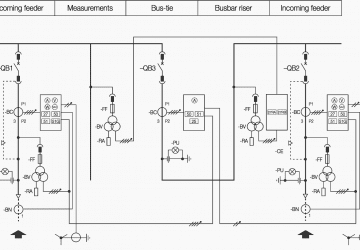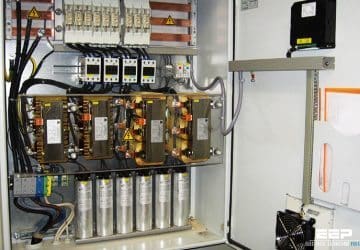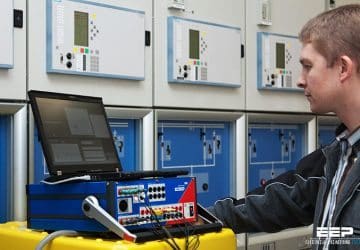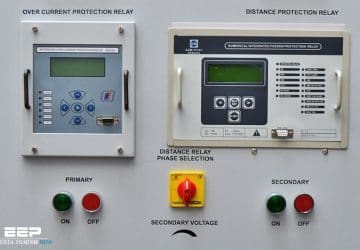The most frequent errors in specifying current transformers (CTs)
Current transformers (CTs) form an essential link within the protection chain of electrical networks. Their specification, even if it is handled by specialists, often includes errors and is insufficiently optimized. This often leads to technological impossibilities, operating delays, extra costs,… Read more
Apr 24, 2017 | By Edvard Csanyi

Thumb rules for surge arrester installation in different earthing systems
A variety of documents deal with the subject of surge arrester installation: for example in France, standard NF C 15-531 focuses on the installation rules of LV surge arresters, and standard NF C 15-100 covers all the LV electrical installations…. Read more
Apr 17, 2017 | By Edvard Csanyi

Circuit breaker selections for low voltage installation (with discrimination)
The LV installation which forms the subject of this study is shown in figure 1 above. This study includes discrimination and coordination of protection between the LV equipment and the protection located upstream of each MV/LV power supply transformer. The… Read more
Apr 14, 2017 | By Edvard Csanyi

Six network operating conditions under which ferroresonance can occur
Due to the multitude of various sources of capacitances and non-linear inductances in a real power network and the wide range of operating conditions, configurations under which ferroresonance can occur are endless. Experience has, however, made it possible to list… Read more
Apr 12, 2017 | By Edvard Csanyi

8 essential relay operating principles of catching faults
In general, as faults (short circuits) occur, currents increase in magnitude, and voltages go down. Besides these magnitude changes of the AC quantities, other changes may occur in one or more of the following parameters: phase angles of current and… Read more
Apr 10, 2017 | By Edvard Csanyi

Three main techniques for mitigating step and touch potential hazards
Mitigating step and touch potential hazards is usually accomplished through one or more of the following three main techniques. Understanding the proper application of discussed techniques is the key to reducing and eliminating any ground potential rise hazards. Contents: Reduction… Read more
Apr 07, 2017 | By Edvard Csanyi

Two main functions of an earth electrode and its installation parameters
The prime function of an earth electrode is the protection of persons. That’s it. It is a fact that we live on Earth! And it is vital to earth exposed metal parts of electrical equipment to avoid electrocution by indirect… Read more
Apr 03, 2017 | By Edvard Csanyi

Five protection relay types used to detect grid disturbances and isolating
Consider a medium voltage distribution system having local generation (e.g., captive power generation) as shown in figure 1 which is also synchronized with the grid. During grid disturbance, if plant generators are not successfully isolated from the grid, they also sink… Read more
Mar 29, 2017 | By Edvard Csanyi

The analysis of four network schemes in terms of reliability and protection
Before sizing an electric network, the single-line diagram of the electric network must be defined on the basis of: Load – it is considered fundamental to establish the true user and service requirements these are destined for, in terms of quality, availability… Read more
Mar 24, 2017 | By Edvard Csanyi

Generator synchronizing check protective function (ANSI 25 code)
One of the easiest way to damage a generator is to synchronize or parallel out of phase with the electrical system. Out-of-phase synchronizing operations can damage or reduce the remaining life of generator rotors and stationary components. Angular differences as… Read more
Mar 22, 2017 | By Edvard Csanyi

Installation, protection and connection of capacitor banks
In an low voltage electrical installation, capacitor banks can be installed at three different levels: Global installation Segment (or group) installation Individual (or single) installation After installation ways, we’ll discuss about protection and connection of capacitors banks. This installation type assumes… Read more
Mar 20, 2017 | By Edvard Csanyi

The essentials of directional overcurrent protection in electrical power grid
Why do we use directional overcurrent protection? When does fault current direction become important? Well, electrical power grid comprises a network of power stations, substations and transmission lines. As well as the simple single-end-fed radial system, there are other more… Read more
Jan 30, 2017 | By Edvard Csanyi

Commissioning of protection relays using test equipment and software
Commissioning and maintenance With numerical protection relays commissioning and maintenance has become far less complicated as a result of the information provided by the devices as well as the integrated self-monitoring. The information provided here is restricted to general notes… Read more
Jan 16, 2017 | By Edvard Csanyi

Fundamental overcurrent, distance and differential protection principles
The aim of this technical article is to cover the most important principles of four fundamental relay protections: overcurrent, directional overcurrent, distance and differential for transmission lines, power transformers and busbars. Contents: Principle of overcurrent protection Principle of directional overcurrent protection… Read more
Dec 26, 2016 | By Edvard Csanyi

A case study of 110/10 kV substation with centralized protection, automation and control system
Centralized substation protection and control has been attempted in the past based on the available technology. This evolution is now at the intersection of sensing, protection and communication technologies, providing the unique opportunity to develop a more reliable and maintainable… Read more
Dec 21, 2016 | By Edvard Csanyi


